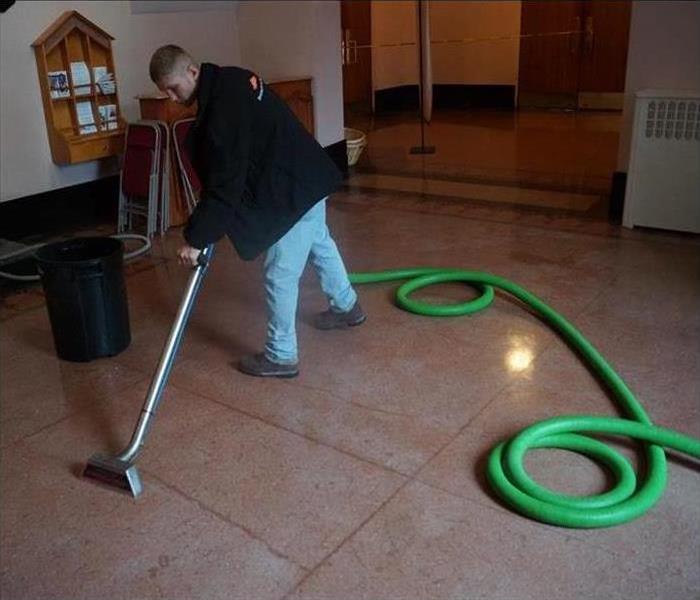How to Deal With Mold Damage After Flooding
9/10/2019 (Permalink)
Combat Mold With These Helpful Tips
Hurricanes, tornadoes and floods in Oak Tree, OK, can deal significant water damage to your house. This could lead to mold and mildew making its way into your home. Stay on top of the wellbeing of your residence and combat mold growth with these helpful tips:
1. Ask the Experts
After your home has been flooded or exposed to standing water, it is very likely that mold will begin to develop quickly. The best thing to do would be to contact a reliable company that specializes in mold remediation. They will perform clean up and restoration of your flooded home. You can rest easy with the peace of mind that your home is completely safe for occupancy.
2. Stop Mold in Its Tracks
Mold can start to grow between 24-48 hours in the right conditions. It's important to move quickly if your home has been flooded. The first step to preventing mold growth is a thorough cleanup process. Start by removing water from your home, ensuring that all excess moisture that is the breeding ground for mold is sucked out of porous surfaces. Clean and disinfect your home thoroughly. Discard any items that have sustained extensive water damage.
3. Stay Alert
It’s easy to relax once your home has been cleaned up and disinfected after a flood, but its best to stay vigilant in the upcoming weeks for any sign of bacteria and mold due to lingering moisture. Flood water can saturate the area surrounding your house and affect the basement and foundation. Be on the lookout for spores or a musty odor that can signify the presence of mold.
Mold growth in your residence may sound like a nightmare, but it’s easy to get ahead of if you are attentive and move quickly. You don’t have to handle it on your own. If mold control in your home gets to be too overwhelming, reach out for the support of professionals that can lend their expertise in ensure your home is mold-free.



 24/7 Emergency Service
24/7 Emergency Service
